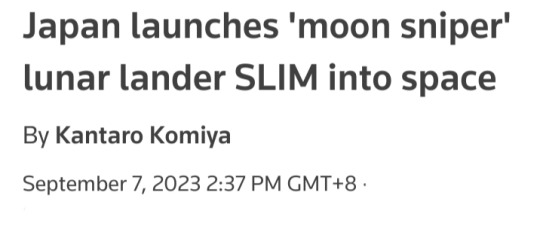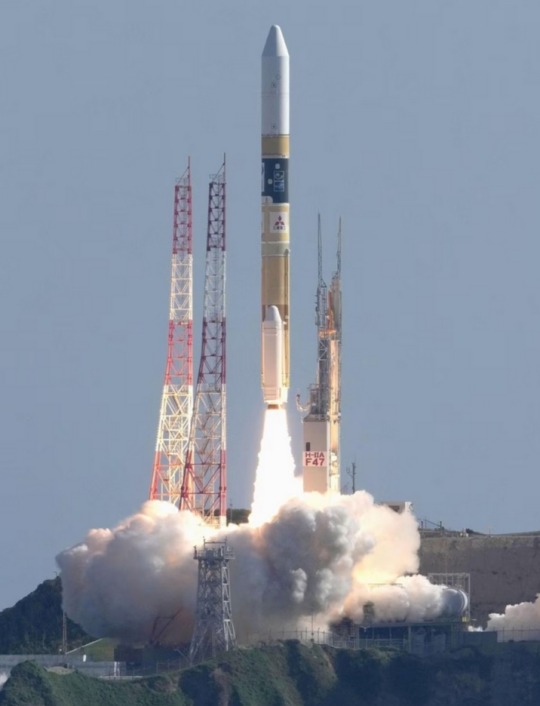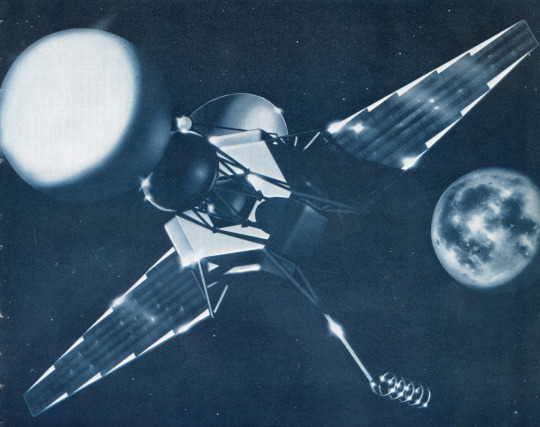#AEROSPACE INDUSTRIES
Text
The Benefits of AS 9100 Certification for Your Aerospace Business

Benefits:
Improved Quality: Enhanced processes result in better product quality.
Reduced Costs: Fewer defects and streamlined processes lead to cost savings.
Enhanced Reputation: Certification enhances your reputation and builds trust among customers and stakeholders.
Access to Markets: Many customers and suppliers require AS 9100 certification to do business, expanding your market reach.
Key Elements:
Leadership Commitment: Top management's commitment to quality is crucial.
Risk Management: Identifying and managing risks is a core aspect of AS 9100.
Customer Focus: Meeting and exceeding customer expectations is central.
Continuous Improvement: A commitment to ongoing improvement drives excellence.
#AS 9100#AS 9100 CERTIFICATION#AS 9100 CERTIFICATION TRAINING#AS 9100 STANDARD#AS 9100 TRAINING#AS 9100 BENEFITS#AEROSPACE#AEROSPACE INDUSTRIES
0 notes
Text

Everett assembly plant, Boeing
61 notes
·
View notes
Text
Introducing the Fictional Megacorpotation Tournament!!
We've gathered ten of the greediest, most unethical, most vicious, and most Stupendium worthy companies in gaming!

I had a lot of intros written out but Tumblr decided it doesn't like fun and deleted all of them.
So... Make your own! You have until 12:00 PM EST on the upcoming Friday to submit arguments for the megacorp you think should win through asks.
(Reblogs welcome and encouraged)
#the outer worlds#halcyon#arasaka#cyberpunk 2077#aperture science#portal#ficsit#satisfactory#alterra#subnautica#macro cosmos#pokemon sword and shield#robco industries#fallout new vegas#asunaro#yttd#the ministry#beholder#aerospace sanitation inc#viscera cleanup detail#tumblr tournament#tumblr tourney#megacorp#thats enough tags i'd say
28 notes
·
View notes
Text

Thank you to all the wonderful corporations supporting Pride Month!
Remember: evil doesn’t discriminate
#pride month#umbrella corporation#united aerospace#silver shamrock novelties#skynet#omni consumer products#shinra corporation#lexcorp#igen#weyland yutani corporation#mishima zaibatsu#abstergo industries#black mesa research facility#aperture laboratories#mann co#scp foundation#mom’s friendly robot company#virtucon
131 notes
·
View notes
Text
youtube
#youtube#militarytraining#Flight#Barksdale Air Force Base#Aerospace#Military#Aviation#Airplane#Air Force#Refuel#Aircraft#USAF#Defense#Warplane#B-52 Stratofortress#Bombers#Strategic Bomber#Aerial Refueling#Bomber Aircraft#United States Air Force#Mid-Air#B-52#343rd Squadron#Aerospace Engineering#US Air Force#Bomber#Aviation Industry#Defense Industry#Air Force Base#Military Base
10 notes
·
View notes
Text
Restored video of first moonwalk
youtube
A few Surveyor probes were sent first, but still: one of the fears was that the surface was fine powder they might sink into like a snowdrift.
Also. Neil really did say "One small step for a man, one giant leap for mankind," but a chance glitch obscured the a. makes a lot more sense.
#nasa#apollo 11#neil armstrong#who is a trekkie btw#buzz aldred#my mom used to be sat next to neil at big aerospace industry functions when the seating was alphabetical#so they would mostly geek about star trek#but he did confirm this#also some studies of the sound files seem to confirm it
92 notes
·
View notes
Text
Also I am VINDICATED that literally all bosses and p.e.s at my new job has said to me "wow you're good at this. This is the fastest anyone has picked this up. You'll advance fast if you actually stay here" Because I can spot design flaws that take like idk engineering sense? I just know what kinds of things are important in design.
So vindicated that I'm a good engineer. Vindicated that I held that company together. They can keep it going (because I set them up to be able to do that) but there is nothing to hold them together. I told the principals that what they'll lose with me is someone to make sure all the parts of the business work together and someone who can make holistic solutions, and that's what they're seeing.
The implication was always that I wasnt a talented engineer. That's what they thought from literally week two (which I know from sources). I wonder what about me made them think in two weeks I was bad at engineering 🤔 I wonder what about me made them think that when I was still learning things like who our customers were and being introduced to people 🤔 literally before I ever took on an engineering project 🤔 not sure! A mystery!
As I was saying in the 'think of things no one has thought of' business class: I have come up with industry standard systems. Is it small? Yes. But it was 100% my design with no co-designers.
#totes bro#is this me not being humble? maybe#but I legitimately think im good at engineering. like i really think im not bad at it#now that everyone around me keeps telling me im good at engineering at the new job (lol)#working in an over 50% female (over 50% nonwhite too) office is great because people dont automatically assume im an idiot#the misogyny in engineering is unbearable#apparently all of the contractors my coworkers work with commit misogyny crimes regularly so its not my imagination#also our whole kind of thing is men make us do their work for them for free because we check for the publics interest#and they dont even try to work inline with what is best. they just try to get away with shit.#EXCEPT for the female PEs! they try to do a good job! so we dont have to pick up their slack#anyway women are simply better engineers. having everyone assume youre bad at engineering makes you better imo#will anyone ever tell you youre better? no.#OH. ALSO. at my last job if the fraud engineer sales guy presented my solutions and products as his own he would get praise from customers#so i eventually stopped saying things were my designs because at least i could get credit that they were good when he presented them#this isnt engineering ethics this is me bitching about misogyny#also with the last post all fields are subject to the military industrial complex. let mech e (and aerospace but you should have known) is#a specific hell because its such a conservative engineering still
10 notes
·
View notes
Text


TOKYO, Sept 7 (Reuters) - Japan launched its lunar exploration spacecraft on Thursday aboard a homegrown H-IIA rocket, hoping to become the world's fifth country to land on the moon early next year.
Japan Aerospace Exploration Agency (JAXA) said the rocket took off from Tanegashima Space Center in southern Japan as planned and successfully released the Smart Lander for Investigating Moon (SLIM).
Unfavourable weather led to three postponements in a week last month.
Dubbed the "moon sniper," Japan aims to land SLIM within 100 metres of its target site on the lunar surface.
The $100-million mission is expected to start the landing by February after a long, fuel-efficient approach trajectory.
"The big objective of SLIM is to prove the high-accuracy landing ... to achieve 'landing where we want' on the lunar surface, rather than 'landing where we can'," JAXA President Hiroshi Yamakawa told a news conference.

The launch comes two weeks after India became the fourth nation to successfully land a spacecraft on the moon with its Chandrayaan-3 mission to the unexplored lunar south pole.
Around the same time, Russia's Luna-25 lander crashed while approaching the moon.
Two earlier lunar landing attempts by Japan failed in the last year.
JAXA lost contact with the OMOTENASHI lander and scrubbed an attempted landing in November.
The Hakuto-R Mission 1 lander, made by Japanese startup ispace (9348.T), crashed in April as it attempted to descend to the lunar surface.

SLIM is set to touch down on the near side of the moon close to Mare Nectaris, a lunar sea that, viewed from Earth, appears as a dark spot.
Its primary goal is to test advanced optical and image processing technology.
After landing, the craft aims to analyse the composition of olivine rocks near the sites in search of clues about the origin of the moon. No lunar rover is loaded on SLIM.
Thursday's H-IIA rocket also carried the X-Ray Imaging and Spectroscopy Mission (XRISM) satellite, a joint project of JAXA, NASA and the European Space Agency.
The satellite aims to observe plasma winds flowing through the universe that scientists see as key to helping understand the evolution of stars and galaxies.

Mitsubishi Heavy Industries (7011.T) manufactured the rocket and operated the launch, which marked the 47th H-IIA rocket Japan has launched since 2001, bringing the vehicle's success rate close to 98%.
JAXA had suspended the launch of H-IIA carrying SLIM for several months while it investigated the failure of its new medium-lift H3 rocket during its debut in March.
Japan's space missions have faced other recent setbacks, with the launch failure of the Epsilon small rocket in October 2022, followed by an engine explosion during a test in July.
The country aims to send an astronaut to the moon's surface in the latter half of the 2020s as part of NASA's Artemis programme.
https://www.reuters.com/technology/space/japan-launches-rocket-carrying-moon-lander-slim-after-three-delays-2023-09-06/
youtube
Japan launches 'Moon Sniper' mission | AFP
7 September 2023
Japan's "Moon Sniper" mission blasted off Thursday as the country's space programme looks to bounce back from a string of recent mishaps, weeks after India's historic lunar triumph.
#H-IIA rocket#Japan#lunar exploration spacecraft#SLIM#moon sniper#Japan Aerospace Exploration Agency (JAXA)#Tanegashima Space Center#Smart Lander for Investigating Moon#Hiroshi Yamakawa#Hakuto-R Mission 1 lander#ispace#Mare Nectaris#X-Ray Imaging and Spectroscopy Mission (XRISM) satellite#JAXA#NASA#European Space Agency#Mitsubishi Heavy Industries#Artemis#space#space rocket#Youtube#Chandrayaan-3 mission#Luna-25 lander#India#Russia#moon#moon landing
24 notes
·
View notes
Text

To while away time on its journey to the Moon the space probe blew bubbles to while away the time.
Aerospace Engineering Magazine - 1961
#vintage illustration#illustration#1961#1960s#1960's#aerospace#aerospace industry#space probe#funny#humor#humour
12 notes
·
View notes
Text

#sorry i havent been online lately -- been sorting out plans for my future and have been super stressed lol#but!! life update!! as of this morning‚ i accepted a kickass job in the aerospace industry :)#the company is doing REALLY cool things#they frequently work with NASA & the international space station for space communications & crewed space flight programs#so i'm SUPER EXCITED#the original plan was grad school‚ but recently i decided to work in industry for a while to save up money#i'll reply to messages soon but. !!!! hell yea!!!! feeling good (finally lol)#talk to yall soon :D
24 notes
·
View notes
Note
HEY NOW YOU BETTER POST SOMETHING SWEET AND HAPPY NOW CAUSE THAT PROMPT HAS ME ON THE LEDGE
you come into my blog… on the day my daughter is to be married… and you ask me for icemav angst… and you expect me not to deliver….
#It’s ok anon i nearly threw up in the shower after writing that dw it hurt me too#working on lesbian charlie/mav (whoever sent that one in —may god smile upon you)#that should be happier hopefully#also the NASA au. that’s teed up too. will require some research but am having ideas#i started my job in the aerospace & defense industry yesterday!!!!!!#in my cubicle I am working under a framed glass print of an f-35 taking off from an aircraft carrier and on the opposite wall is a ch-47#it’s uh a little weird admittedly.#but it seems like to get ur foot in the door in defense journalism... you do have to stick your feet in closing doors lol#and it might hurt a little#ate lunch on the roof of the Raytheon building. 18 yo socialist me would strangle me.#I’ll do wip Thursday this week. sorry not ready for today sorry.
23 notes
·
View notes
Text
#studyblr#stemblr#poll#lawblr#mortuary science#mortician#embalmer#funeral industry#funeral director#aerospace#aeronautics#aeronautical engineering#engineer#engineering
5 notes
·
View notes
Text

Triumph Group aerospace industries
25 notes
·
View notes
Text
The Impact of In-Situ Resource Utilization (ISRU) on Space Robotics and Autonomous System (Space RAS) Market: Mining and Manufacturing in Space

Introduction:
As humanity ventures further into space, the need for sustainable and efficient exploration has become increasingly apparent. In-Situ Resource Utilization (ISRU) is a critical technology that addresses this need by enabling the extraction and use of local resources from celestial bodies.
This approach not only reduces the dependence on Earth-based supplies but also significantly impacts the development and application of Space Robotics and Autonomous System (Space RAS) Market.
This article delves into the influence of ISRU on space robotics, focusing on the mining and manufacturing processes that are transforming space exploration.
Download FREE Sample: https://www.nextmsc.com/space-robotics-and-autonomous-system-space-ras-market/request-sample
Introduction to In-Situ Resource Utilization (ISRU)
In-Situ Resource Utilization (ISRU) involves utilizing resources found on celestial bodies—such as the Moon, Mars, or asteroids—rather than transporting all necessary materials from Earth. ISRU technologies include mining, processing, and manufacturing materials directly in space, which can drastically reduce mission costs and enhance the sustainability of long-term space operations.
The Role of Space Robotics in ISRU
Space robotics play a pivotal role in the implementation of ISRU technologies. Robotic systems are essential for conducting the complex and often hazardous tasks involved in resource extraction and processing. The impact of ISRU on space robotics can be categorized into several key areas:
Inquire before buying: https://www.nextmsc.com/space-robotics-and-autonomous-system-space-ras-market/inquire-before-buying
1. Development of Specialized Mining Robots
ISRU requires the development of specialized mining robots capable of operating in harsh extraterrestrial environments. These robots are designed to perform tasks such as drilling, excavation, and sample collection. Key considerations for these robots include:
Adaptability: Mining robots must be adaptable to various terrains and environmental conditions, from the rocky surface of Mars to the icy regolith of the Moon. Advanced mobility systems inspired by nature and robust design features are crucial for overcoming these challenges.
Autonomy: Given the communication delays between Earth and distant celestial bodies, mining robots must be highly autonomous. They need to operate independently, make real-time decisions, and adjust their operations based on environmental feedback.
2. Integration of Resource Processing Systems
In addition to mining, ISRU involves processing extracted materials to make them usable. Space robotics are essential for integrating and operating resource processing systems, including:
Resource Refinement: Robots are used to refine raw materials extracted from celestial bodies. This may involve crushing, heating, or chemical processing to obtain valuable resources such as water, oxygen, and metals.
Manufacturing Components: Processed materials can be used to manufacture components for space habitats, spacecraft, and other infrastructure. Robotic systems capable of 3D printing and assembling parts from in-situ resources are increasingly important for building sustainable space operations.
3. Enhancing Mission Sustainability and Efficiency
ISRU-driven space robotics contribute to mission sustainability and efficiency by:
Reducing Payload Mass: By utilizing resources on-site, the mass of payloads transported from Earth can be significantly reduced. This allows for more efficient use of spacecraft launch capacity and decreases mission costs.
Enabling Longer Missions: Access to local resources supports longer-duration missions by providing essential supplies such as water and oxygen, and by facilitating the construction of habitats and other infrastructure.
Technological Innovations in ISRU-Related Space Robotics
Several technological innovations are driving the development of space robotics for ISRU applications:
1. Advanced Drilling Technologies
Innovations in drilling technologies are crucial for efficient resource extraction. Developments include:
Drill Design: Space drills are designed to penetrate and extract materials from diverse substrates, including loose regolith and hard rock. Recent advancements focus on improving drill efficiency and reliability in low-gravity and vacuum environments.
Autonomous Operation: Advanced sensors and AI algorithms enable drilling robots to autonomously identify resource-rich areas and optimize drilling parameters, reducing the need for human intervention.
2. In-Situ Resource Processing Units
Processing units are essential for converting raw materials into usable forms. Innovations include:
Regolith Processing: Technologies for processing lunar and Martian regolith to extract valuable minerals and produce construction materials are under development. This includes methods for converting regolith into metal alloys and other useful compounds.
Water Extraction: Systems for extracting water from the lunar or Martian soil or ice deposits are being refined. This involves advanced techniques for sublimating and purifying water to make it suitable for consumption and other uses.
3. 3D Printing and Manufacturing Systems
3D printing technologies are transforming how components are manufactured in space:
Material Synthesis: 3D printers designed for space applications can use ISRU-derived materials to produce parts and tools. This capability reduces reliance on Earth-supplied materials and supports the construction of habitats and equipment in space.
On-Demand Production: The ability to print components on demand enables rapid adaptation to changing mission needs and repair of damaged equipment, enhancing mission flexibility and resilience.
Case Studies and Real-World Applications
1. NASA’s Regolith Excavation and Processing
NASA has been developing technologies for regolith excavation and processing for lunar missions. The Lunar Reconnaissance Orbiter and upcoming Artemis missions will use robotic systems to explore and extract lunar regolith, which can be processed to produce oxygen and construction materials.
2. Mars Rover Missions
The Mars rovers, such as Curiosity and Perseverance, are equipped with advanced instruments for analyzing Martian soil and rocks. Future missions will integrate ISRU technologies to test and demonstrate resource extraction and processing capabilities on Mars.
3. Asteroid Mining Projects
Private companies and space agencies are exploring asteroid mining as a potential source of valuable resources. Robotic spacecraft are being designed to land on asteroids, extract materials, and return samples to Earth or process them in space for future use.
Challenges and Future Directions
While ISRU holds great promise, several challenges need to be addressed:
1. Technological and Engineering Challenges
Developing reliable and efficient mining and processing robots for space requires overcoming significant engineering challenges. These include designing systems that can operate in extreme temperatures, low gravity, and high radiation environments.
2. Cost and Resource Allocation
Investing in ISRU technologies and space robotics requires substantial financial resources. Balancing the cost of development with the potential benefits is a critical consideration for space agencies and commercial entities.
3. Legal and Regulatory Considerations
The use of extraterrestrial resources raises legal and regulatory questions, including property rights and resource ownership. Addressing these issues is essential for ensuring that ISRU activities are conducted in a manner that is fair and sustainable.
Conclusion
In-Situ Resource Utilization (ISRU) is transforming the landscape of space exploration by enabling the extraction and use of local resources. Space robotics play a crucial role in this transformation, driving advancements in mining, processing, and manufacturing technologies. By leveraging the power of ISRU, space missions can become more sustainable, efficient, and cost-effective.
As the Space Robotics and Autonomous Systems (Space RAS) market continues to evolve, the integration of ISRU technologies will play an increasingly significant role in shaping the future of space exploration. By addressing current challenges and capitalizing on technological innovations, space robotics will pave the way for a new era of exploration and development in the cosmos.
3 notes
·
View notes
Photo

Airbus A300B by sir20
#photographers on tumblr#original photographers#photography#abstract photography#Contemporary Photography#sir20#airbus#aircraft#airplane#plane#aeronautical and aerospace industry#aeronautic#colorful#color#colors#abstract#abstraction#original phography#original#artists on tumblr#creators on tumblr#Photographie#fotografia#fotografie#fotografía#contemporary#composition#fine art photography
102 notes
·
View notes
Text
youtube
#youtube#militarytraining#NATO Air Policing#Baltic Skies#NATO#Latvia#European Union#Eastern Europe#Military#Aviation#Eurofighter Typhoon#Baltic States#Aerospace Industry#German Eurofighters#Air Force#Security#Defense#Aircraft#Aircraft Interception#Fighter Jets#Military Exercises#Air Defense
3 notes
·
View notes